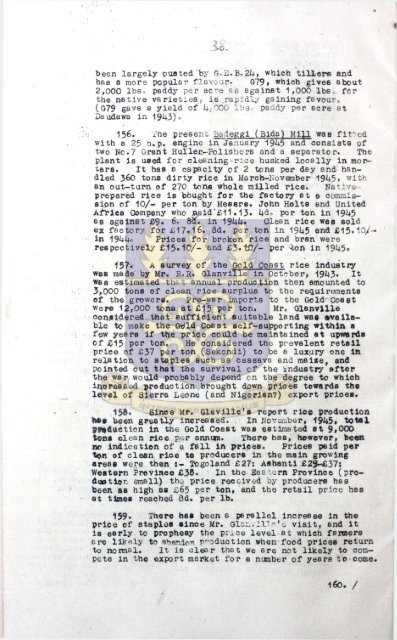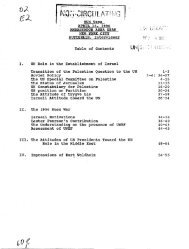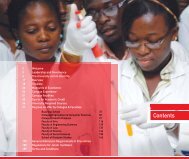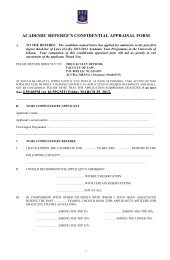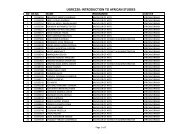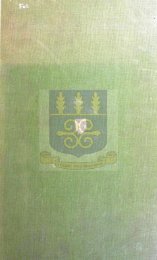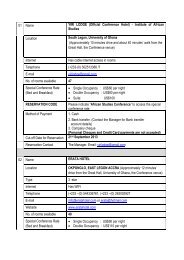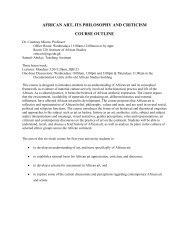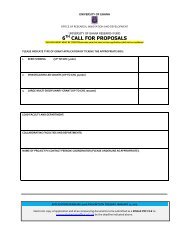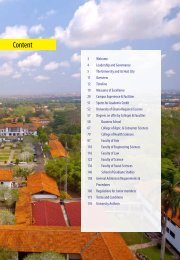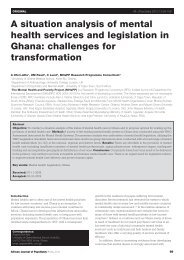View/Open - UGSpace - University of Ghana
View/Open - UGSpace - University of Ghana
View/Open - UGSpace - University of Ghana
- No tags were found...
Create successful ePaper yourself
Turn your PDF publications into a flip-book with our unique Google optimized e-Paper software.
een largely ousted by G..E. B, 24, which tillers andhas a more popular flavour* G79» which givea about2,000 lbs- paddy per acr-e as against 1,000 lbe, forthe native varieties, is .rapidly gaining favour.,(G79 gave a yield <strong>of</strong> 4;00G lbs- paddy per acre atDaudawa in 1943)*156. The present Badeggi (Bida) Mill was fittedwith a 25 h.p. engine in January 1945 and consists <strong>of</strong>two No.7 Grant Hullep-Polishers and a separator. Theplant is used for cleaning rice husked locally in mortars.It has a capacity <strong>of</strong> 2 tons per day and handled360 tons dirty rice in March-November 1945» withan out-turn <strong>of</strong> 270 tons whole milled rice. Nativepreparedrice is bought for the factory et a commission<strong>of</strong> 10/- per ton by Messrs. John Holts and UnitedAfrica Company who gaid'£11.13. 4d» per ton in 1945es against £9. 6* 8u. in 1944. Clean rice was soldex factory for £17.16. 8d. per ton in 1945 and £15.10/-in 1944c Prices for broken rice and bran wererespectively £15.10/- and £3.tO/- per ^on in 1945*157v A survey <strong>of</strong> the Gold Coast rice industrywas made by Mr. R.R. Glanville in October, 1943. Itwas estimated that annual production then amounted to3,000 tons <strong>of</strong> clean' rice surplus to the requirements<strong>of</strong> the growers. pre-war imports to the Gold-Coastwere 12,000 tons at filp, per ton. Mr. Glanvilleconsidered-that Buffieient suitable land was svaliableto make thefi^ld Coast self-Bupportlng within afew years if the price could be maintained at upwards<strong>of</strong> £15 per ton. He considered the prevalent retailprice <strong>of</strong> £37 per ton (Sekondi) to be a luxury one inrelation to staples such a6 cassava and mai«e, andPointed out that the survival <strong>of</strong> the industry afterthe war would probably depend cn the degree to whichincreased production brought down prices towards thelevel <strong>of</strong> Sierra Leone (and Nigerian?) export prices.15ft. Since Mr. Glaville's report rice productionhss been greatly increased. In November, 1945, totalpnduetion in the Gold Coast wae estimated at 9,000tons clean rice per annum. There haB, however, beenno indication <strong>of</strong> a fell in prices. Prices paid perton <strong>of</strong> clean rice to producers in the main growingareas were then j- Togoland £27: Aahanti £23-£37:Western Province £3©• In the Eesfern Province (productlor small) the price received by producers hasbeen ae high BB £65 per ton, and the retail price hasat times reached Od. per lb.159. There has been a parallel increase in theprice <strong>of</strong> staplea aince Mr. OlanTille 1 e visit, and itis early to prophesy the pr_ce level at which farmersare likely to ^ivAe*. production when food priceB returnto normal. it is clear that we are not likely to competein the export market for a number <strong>of</strong> years Vo come.160. /


